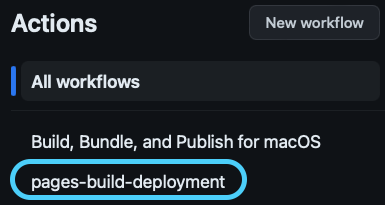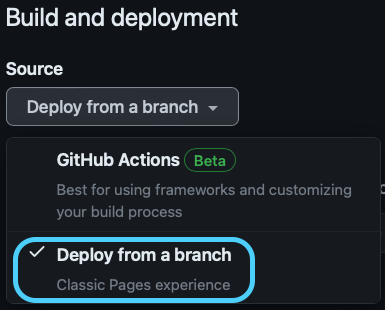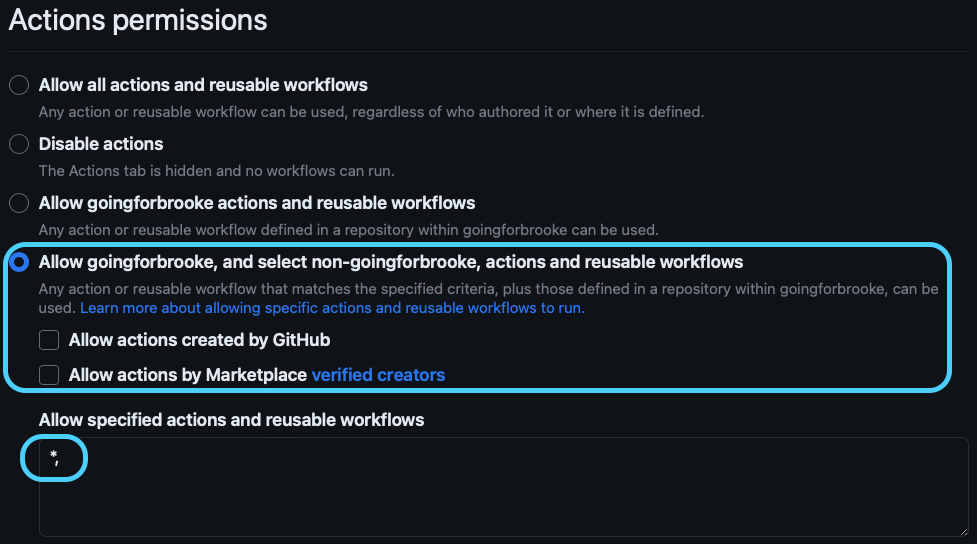Kill the Mad Scientist! Non-Jekyll Github Pages SSG
My first foray into Github Pages seemed like a warmup. Given how strongly Github touts its Jekyll integrations, I assumed that the process would painless. Ruby proved me wrong.
Woes of Ruby

Jekyll’s quick start page belies the complexity of properly installing Ruby. It threw a bunch of clutter into my .zshrc and installed a bunch of non-standard tools on my machine. Keeping non-standard tools up to date was going to cost me more time down the line, and I still wound up editing HTML/CSS/JS on an unaesthetic theme.
Zola to the Rescue
I swapped Jekyll for Zola because I already had Rust on my box and, hey, Rust makes everything better. GitHub suggests other Static Site Generators (SSGs) with existing CI workflows, but since I was going off the beaten path, I thought it better to double down on something fresh.
Curse of the Secret Sauce
Zola comes with a pre-built workflow for publishing to Github Pages, but it has to fight with Pages’ secret sauce.

This is Github’s automatic publishing action for Pages, which isn’t defined in .workflows and likes to add itself to projects when repos meet one of the mysterious criteria that define a repo as a Pages repo. This meant that the output from my non-Jekyll SSG would be immediately overwritten by Jekyll’s ill-fated output from the pages-build-deployment Action. I navigated to my site’s URL, expecting to see a beautiful Zola-generated site, but found a bare HTML site.
These triggers aren’t defined in Github’s documentation and there’s a good bit of discourse about how they seem impossible to disable. The triggers seem to be:
- naming a repo
{{username}}.githhub.io - setting up Pages in the “Pages” tab of a repo’s settings
- adding a
.yamlworkflow in.workflows/that pushes to thegh-pagesbranch
Recommended Solutions
To disable Jekyll builds, GitHub recommends adding an empty .nojekyll file “to the root of your pages repo.” Initially, this didn’t work because .nojekyll needs to exist at the root of the branch that Pages deploys from. The secret sauce defaults to gh-pages, but adding .nojekyll to gh-pages won’t help because most SSGs blow away the branch's contents on each build. With Zola, I accomplished this by adding .nojekyll to static/ in the main branch, which delivered .nojekyll to the root of gh-pages. Still, the secret sauce paid it no heed and my site was soon overwritten by Jekyll.
My Solution
To fix the problem, I had to excise Actions from the repo.
First, I ignored the recommendation to use Actions for “customizing my build process” in Repo -> Settings -> Pages -> Build and Deployment. Instead, I restricted Pages to branch deployments.

Second, I disabled all Actions with the exception of workflows defined by me. Choosing “Allow goingforbrooke actions and reusable workflows” doesn’t stop the Pages secret sauce, so I allowed all of the repo’s workflows that match *. This is found in Repo -> Settings -> Actions -> General -> Actions Permissions.

Takeaways
With that, I have a blog that automatically updates when I push to it. 🎉
If you’d like to use anything that I’ve built here, feel free to copy-pasta my workflow for automatically pushing a website. It’s Zola’s deploy action with the exception of changing zola-deploy-action to master. This prevents an issue in Zola.
Final Thoughts
Image hosting may become an issue if Github isn’t happy about the number of screenshots that I’m including in my posts. I also groan a little each time I commit an image to Git when it should really be hosted elsewhere. An S3-backed hosting option like the one for WordPress would be great, but I get the feeling that I’ll need to code it myself.
Zola's been a gem so far with more features than I know what to do with. I’ve yet to explore nifty things like filtering posts by tags, search indexing, and automatic image resizing. The real upside is that I feel confident in my ability to extend the project with anything else that I could want.
I wonder if I’ve taken my site design too far and created something that won’t appeal to a technical audience. I earnestly want to make a great web experience for my readers, but perhaps a basic HTML site without SSL would’ve sufficed.
A rare counterexample to the principle of specialization: your site should never seem like it was made by communications people, and the best way to achieve this is for it not to be. This is something founders should continue to micromanage forever.
— Paul Graham (@paulg) May 6, 2023
For any Microsoft developers reading this, I appreciate what you’ve done so far and I’d like to see your product gain wider adoption so I can use it on enterprise networks in exchange for green slips of paper. The design concepts are solid and I catch glimpses of the simplicity that made (pre-acquisition?) GitHub wonderful. To love Actions, I need well-maintained Actions for popular toolchains. I also need GUI-only controls to move to versioned config files so there’s no backend smoke and mirrors.